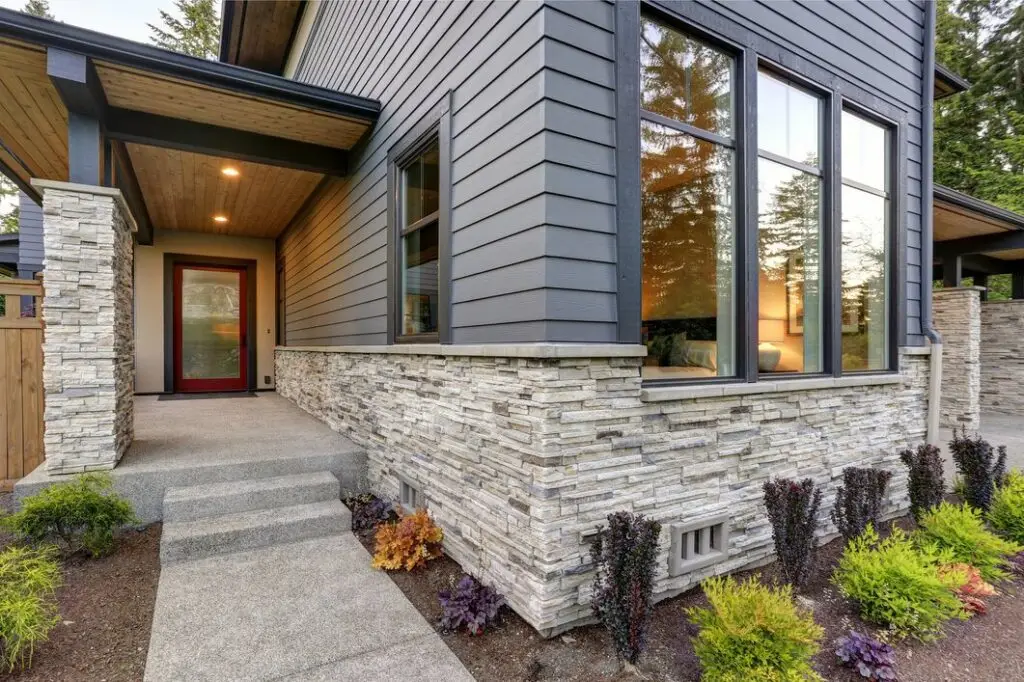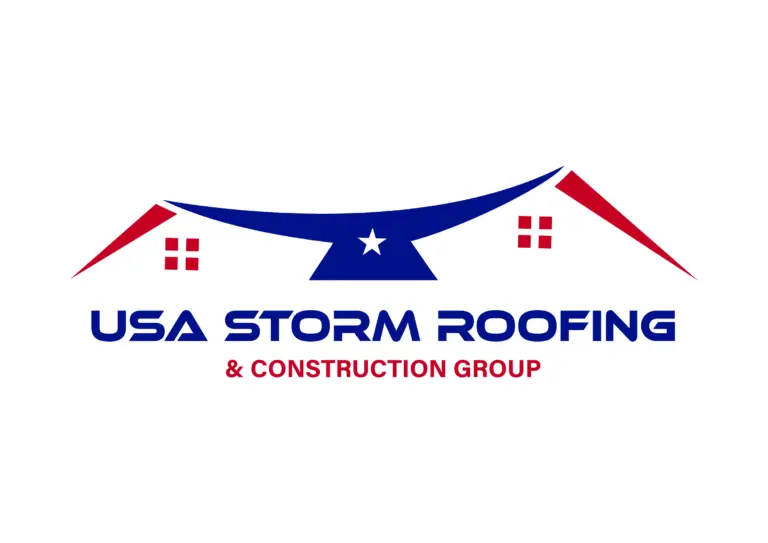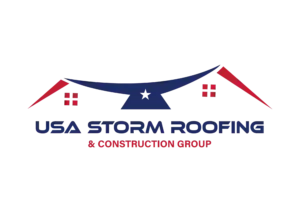Top 10 Siding Materials for 2024: Pros and Cons
- usastormroofing
- No Comments

As we gear up for 2024, USA Storm Roofing & Construction Group is here to guide you through the best siding materials for your home. The right siding can boost your home’s curb appeal, improve its resistance to weather conditions, and increase its market value. Here’s our expert take on the top 10 siding materials, detailing their pros and cons to help you make the best choice for your property.
Comparison Chart for Top 10 Siding Materials
| Siding Material | Cost | Maintenance | Durability | Aesthetic Appeal |
|---|---|---|---|---|
| Vinyl Siding | Low | Low | Moderate | High |
| Fiber Cement Siding | Moderate | Low | High | High |
| Wood Siding | High | High | Moderate | Very High |
| Metal Siding | High | Low | Very High | Moderate |
| Stucco Siding | Moderate | Moderate | High | High |
| Brick Veneer | High | Low | Very High | Very High |
| Stone Veneer | High | Low | Very High | Very High |
| Composite Siding | Moderate | Low | High | High |
| Engineered Wood Siding | Moderate | Moderate | High | High |
| Insulated Siding | High | Low | Very High | Moderate |
1. Vinyl Siding: Affordable and Versatile
Vinyl siding continues to dominate the market due to its cost-effectiveness and versatility. It’s a fantastic option for those who want a durable, low-maintenance solution without breaking the bank.
Pros:
- Cost-effective: One of the most affordable siding options available.
- Low maintenance: Resistant to pests and rot, vinyl siding requires just a simple wash now and then.
- Variety: Available in numerous colors and textures to match any style.
Cons:
- Weather sensitivity: Can become brittle in extreme cold or warp under intense heat.
- Environmental impact: Not the most eco-friendly option due to its plastic composition.
2. Fiber Cement Siding: Modern and Fire-Resistant
Fiber cement siding is gaining popularity for its modern look and substantial durability. It’s made from a mix of wood pulp, cement, clay, and sand, offering both style and strength.
Pros:
- Fire resistant: Excellent choice for areas prone to wildfires.
- Termite resistant: Not appealing to pests, ensuring longer life.
- Aesthetic appeal: Mimics more expensive materials like wood and stone.
Cons:
- Installation: Requires professional installation due to its heavy composition.
- Cost: More expensive than vinyl but offers longer durability.
3. Wood Siding: Timeless and Customizable
There’s nothing quite like the charm and warmth of real wood. Wood siding offers a timeless appeal that many homeowners covet, suitable for a variety of architectural styles.
Pros:
- Natural look: Provides a classic aesthetic that can increase your home’s curb appeal.
- Customizable: Can be painted or stained in any color.
- Eco-friendly: Wood is a natural, renewable resource.
Cons:
- Maintenance: Requires regular staining or painting to prevent decay and damage.
- Cost: Generally more expensive than synthetic options, and costs can vary depending on the type of wood.
4. Metal Siding: Durable and Modern
Metal siding, whether aluminum or steel, offers a sleek, modern finish along with impressive durability. It’s particularly popular in contemporary architectural designs.
Pros:
- Longevity: Metal siding can last 40 years or more with minimal maintenance.
- Fire resistance: Non-combustible material that provides an added layer of safety.
- Eco-friendly: Often made from recycled materials and fully recyclable at the end of its life.
Cons:
- Noise: Can be noisy during rain or hail unless properly insulated.
- Denting: Susceptible to dents from physical impacts and hail.
5. Stucco Siding: Classic Mediterranean Style
Stucco has been used for centuries and continues to be a popular choice due to its distinctive texture and durability. It’s ideal for achieving a Mediterranean or Spanish look.
Pros:
- Aesthetic: Unique texture that can be tinted in various colors.
- Durability: When applied correctly, stucco can last for decades.
- Energy efficient: Provides excellent insulation properties.
Cons:
- Cracking: Can develop cracks if the foundation settles or in extreme temperature changes.
- Maintenance: Requires periodic maintenance to seal cracks and prevent water intrusion.
6. Brick Veneer: Classic and Sturdy
Brick veneer offers the appearance of real brick but is actually a single layer placed over a different structure. It gives the aesthetic of full brick without the extensive labor and cost.
Pros:
- Appearance: Provides a classic, durable exterior that can boost house value.
- Low maintenance: Brick doesn’t need painting or frequent upkeep.
- Weather resistant: Holds up well in various environmental conditions.
Cons:
- Cost: More expensive than some siding options due to material and installation costs.
- Weight: Heavy and may require additional structural support during installation.
7. Stone Veneer: Elegance and Luxury
If you’re looking for the elegance of natural stone without the hefty price tag, stone veneer is an excellent choice. It’s perfect for adding a touch of luxury and sophistication to any home.
Pros:
- Aesthetic appeal: Adds a high-end look to your home’s exterior.
- Durability: Resistant to weather and wear, lasting for years.
- Maintenance: Requires very little maintenance once installed.
Cons:
- Cost: Though less than natural stone, stone veneer is still one of the pricier siding options.
- Installation: Must be installed by professionals, adding to the overall cost.
8. Composite Siding: Innovative and Stylish
Composite siding is made from a mixture of materials, often including wood fibers, plastics, and binders, crafted to offer the best of both worlds: durability and aesthetics.
Pros:
- Versatility: Available in styles that mimic wood, stone, and more.
- Low maintenance: Resists rot and decay better than natural materials.
- Sustainability: Often uses recycled materials in its composition.
Cons:
- Cost: Can be more expensive than vinyl or traditional wood siding.
- Variability: Quality can vary between manufacturers, so choosing a reputable brand is crucial.
9. Engineered Wood Siding: Eco-Friendly and Affordable
Engineered wood siding provides the look of real wood with added environmental benefits. Made from wood fibers and resin, this siding is designed to stand up to the elements while being eco-friendly.
Pros:
- Eco-friendly: Uses smaller, fast-growing trees and recycled wood materials.
- Aesthetic: Looks very similar to real wood without the same maintenance requirements.
- Cost-effective: More affordable than traditional wood with similar benefits.
Cons:
- Durability: Although it’s treated to resist moisture and pests, it may not be as durable as other synthetic options.
- Maintenance: Requires some maintenance to keep its appearance over time.
10. Insulated Siding: Energy Efficient and Comfortable
Insulated siding features a layer of foam insulation attached to the back of the siding material, making it an ideal choice for those looking to enhance their home’s energy efficiency.
Pros:
- Energy efficiency: Helps keep your home warmer in winter and cooler in summer, reducing heating and cooling costs.
- Noise reduction: The insulation helps reduce outside noise.
- Durability: The insulation adds an extra layer of protection against impact.
Cons:
- Cost: Generally more expensive than non-insulated siding due to the added materials.
- Installation: Requires professional installation to ensure the insulation is effective.
At USA Storm Roofing & Construction Group, we understand the importance of choosing the right siding for your home. Whether you’re looking for durability, style, or environmental sustainability, our experts are here to help you navigate your options and find the perfect fit for your home and budget. Let us help you make your home both beautiful and resilient for years to come.

- License VA #2705187435
- License DC #410525000029
- License MD #162074
Hours: Monday-Saturday 8:00AM-6:00PM
10306 Eaton Pl Suite 300, Fairfax, VA 22030
© Copyright USA Storm Roofing | All Rights Reserved
